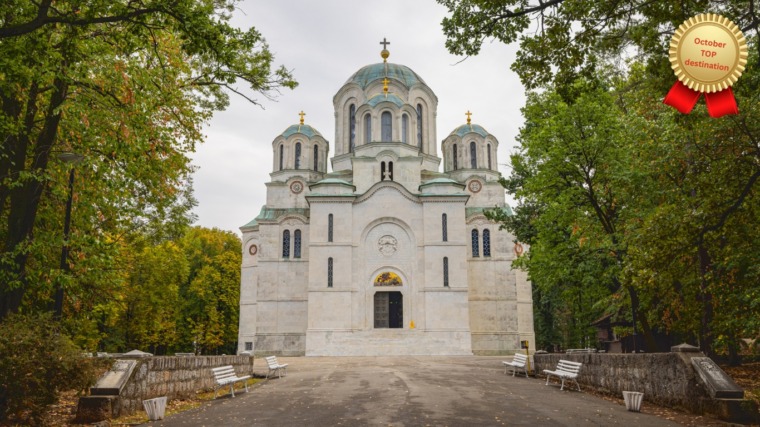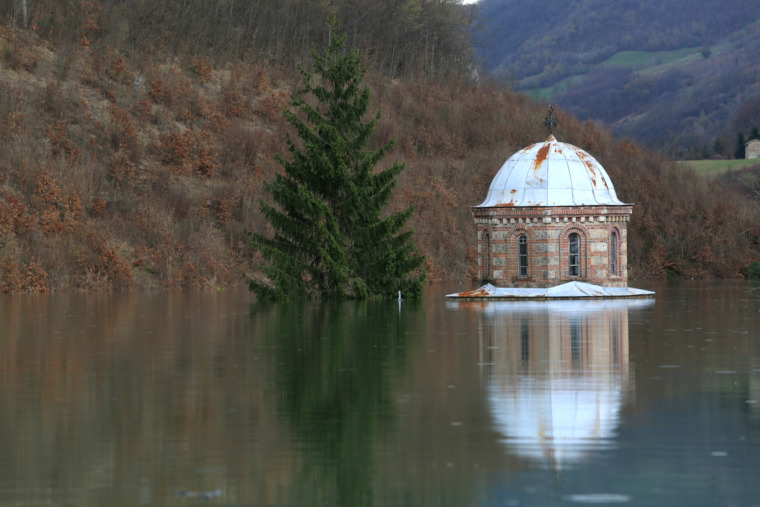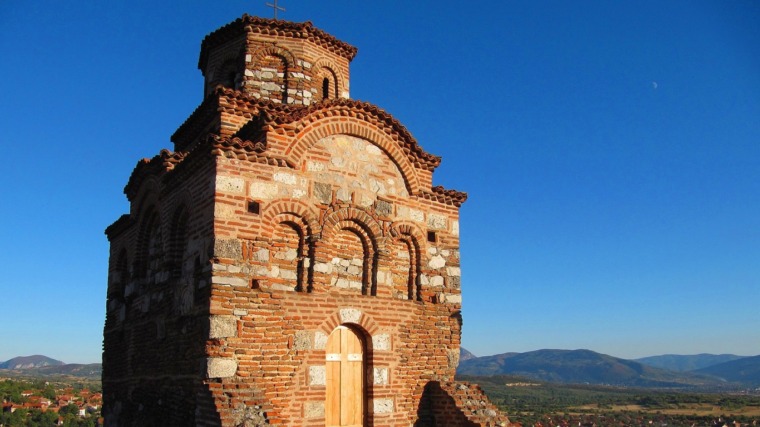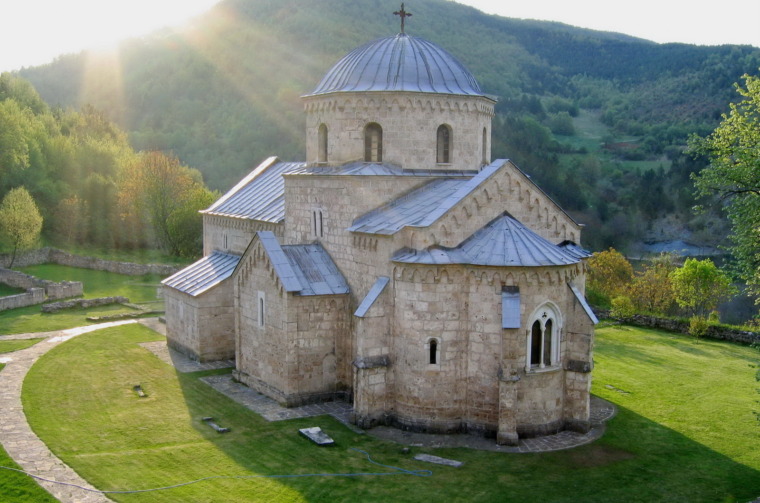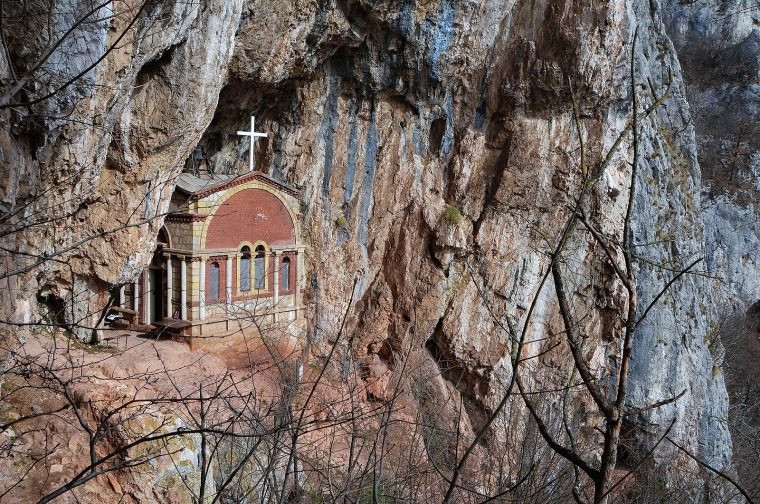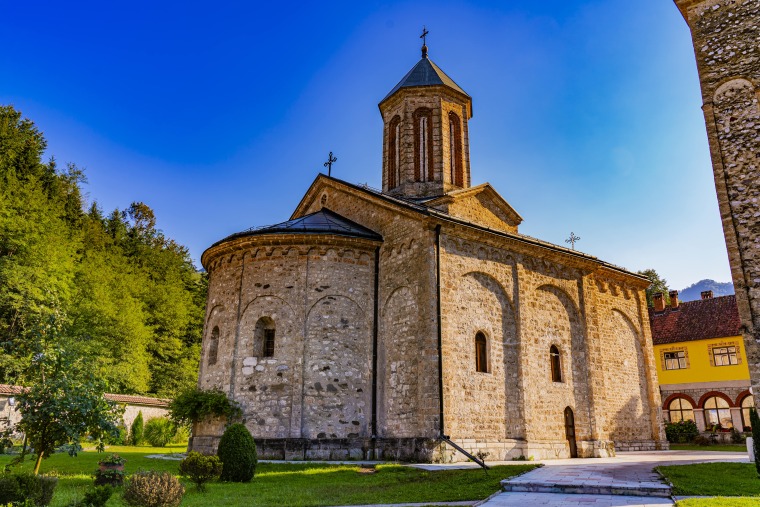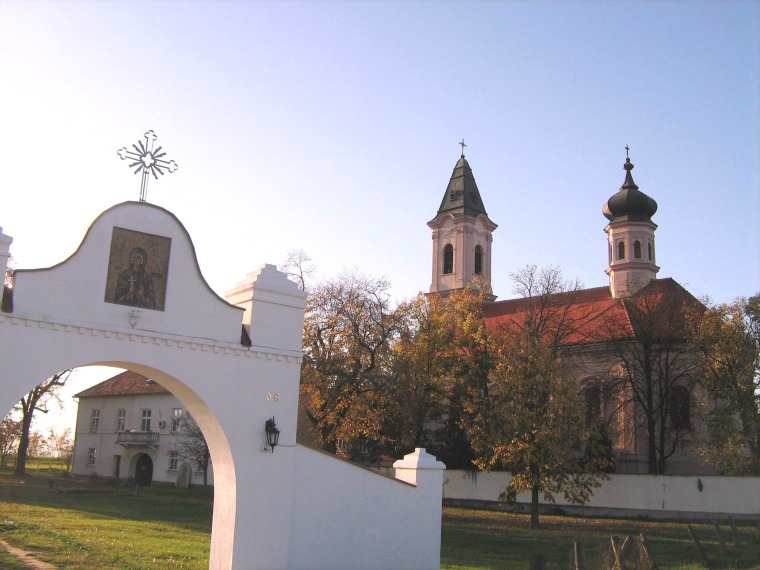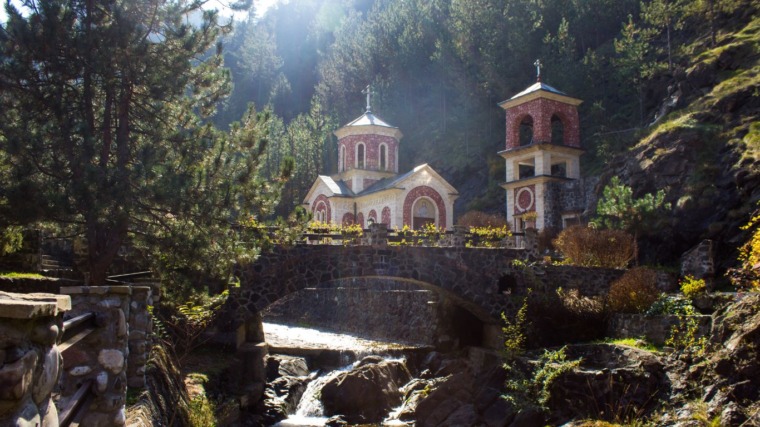

Among the green hills of the vivid Resava gorge, surrounded by magnificent towers of the medieval fortress, there is a monastery which fortification falls into the top achievements of Serbian architecture, and its frescoes into the line of greatest domains of Serbian medieval painting – Manasija Monastery.
History pages of one of the most important Serbian sacred, have being filled up since far 1407. At the time, despot Stefan Lazarević had decided to raise his endowment, a place for piece and home for silence. In the immediate vicinity of Despotovac, a city which was named after him, he had found a soil to build the magnificent monastery complex and a fort of 12 surrounding towers.
After a decade of dedicated and hard work, the monastery which has always triggered admiration and strong affection of those who had a chance of seeing it in person has been built. Protected by the strong and high hills surrounded by the most beautiful nature of Pomoravski district, Manasija represents a real jewel of Serbian architecture, culture and art.
For over 600 years of existence, the monastery has been destroyed and ruined many times. More comprehensive restauration was done in 1956, and its renounce is still on. Manasija is a property of the Republic of Serbia and is proclaimed a Cultural Monument of great importance.
It is hard to say whether this monastery leaves you breathless for its beauty, nature that hugs it or for long and stormy history which it has been keeping ever since. Uniqueness with which it breaths can be seen from the entrance to giant towers which has been keeping it safe for centuries.
Being built as the unbeatable defensive fort, the 11 towers are linked by walls which had enabled movement to the barristers. The exception had always been the Donžon or Despot Tower which had been different from other towers by its look and building style. At the time, there was a 17 meters long canal around the complex, and it went down to the „Small city“, or the outwork of the fortification.

By entering the very heart of this fascinating medieval fort, you come to the Holy Trinity Church. Beauty that breaths with its humbleness and valuable frescoes, the building in the middle of monastery complex gives that special charm to this holy place. Although the time and wars have taken away a huge part of resavska art’s beauty, the remaining frescoes are valuable witnesses of Serbian medieval history and art.
Manasija is also known by the Resava School which had been built within the monastery during the first half of XV century. Scholarly monks, translators, writers and re-writers had been gathering there to decorate handwritings and books, and because of that the monastery was considered a symbol of spirituality and civilization.
Among frescoes that have been saved is the most famous ktitor composition where despot Stefan is holding a charter in one hand, and model of the monastery in other. Magnificent are the aspects of Saint Serbian warriors as well as the scenes from the life of Jesus Christ. Along with the kept faces of prophets from Old Testament, these frescoes put Manasija into the greatest domains of Serbian medieval painting.
 The best kept building of the firstly built complex represents the monastery dining-room. Rooms intended for eating have been the most important ones besides the church, so it is especially interesting to visit the rooms where monks had sorted their groceries and where they had been eating 600 years ago. Monastery dining-room represents the largest medieval dining-room in Serbia.
The best kept building of the firstly built complex represents the monastery dining-room. Rooms intended for eating have been the most important ones besides the church, so it is especially interesting to visit the rooms where monks had sorted their groceries and where they had been eating 600 years ago. Monastery dining-room represents the largest medieval dining-room in Serbia.
Resava district is a real haven for the lovers of culture, art and history but also for those who are in love with the beauty of nature. That is why the visit to Manasija is a must, but it is not the only destination that you have to see if you end up in this part of Serbia. Besides numerous tourist attractions, here you will be greeted by amiable hosts, always in the mood for taking you to a detour to remember.
Since you are already here, do not miss…
Despotovac– a peaceful town in the east of Serbia, disturbed only by the sounds of Resava river. It lies between Kučaj mountains on the west and stunning plains on the east, which is another thing specific of this place whose interesting past provokes imagination and the unique natural riches awake all senses.
Resava cave– one of the oldest and at the same time the most beautiful caves in Serbia. The most interesting things to see are 45 million years old decorations.
Veliki Buk waterfall– a unique phenomenon among the accumulative tufa waterfalls of Serbia, and with its power and height of 25m it always takes the breath away from the amazed visitors.

